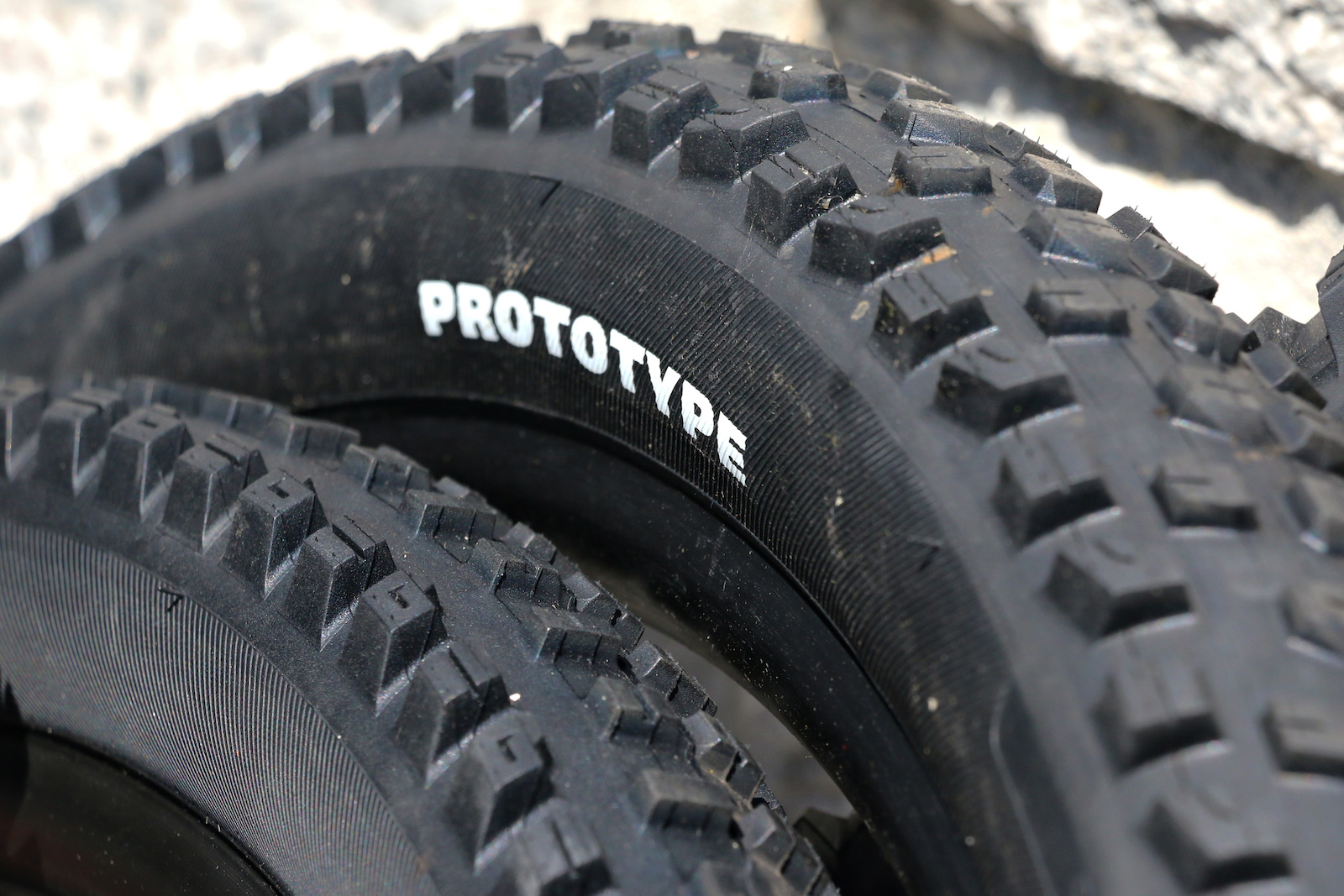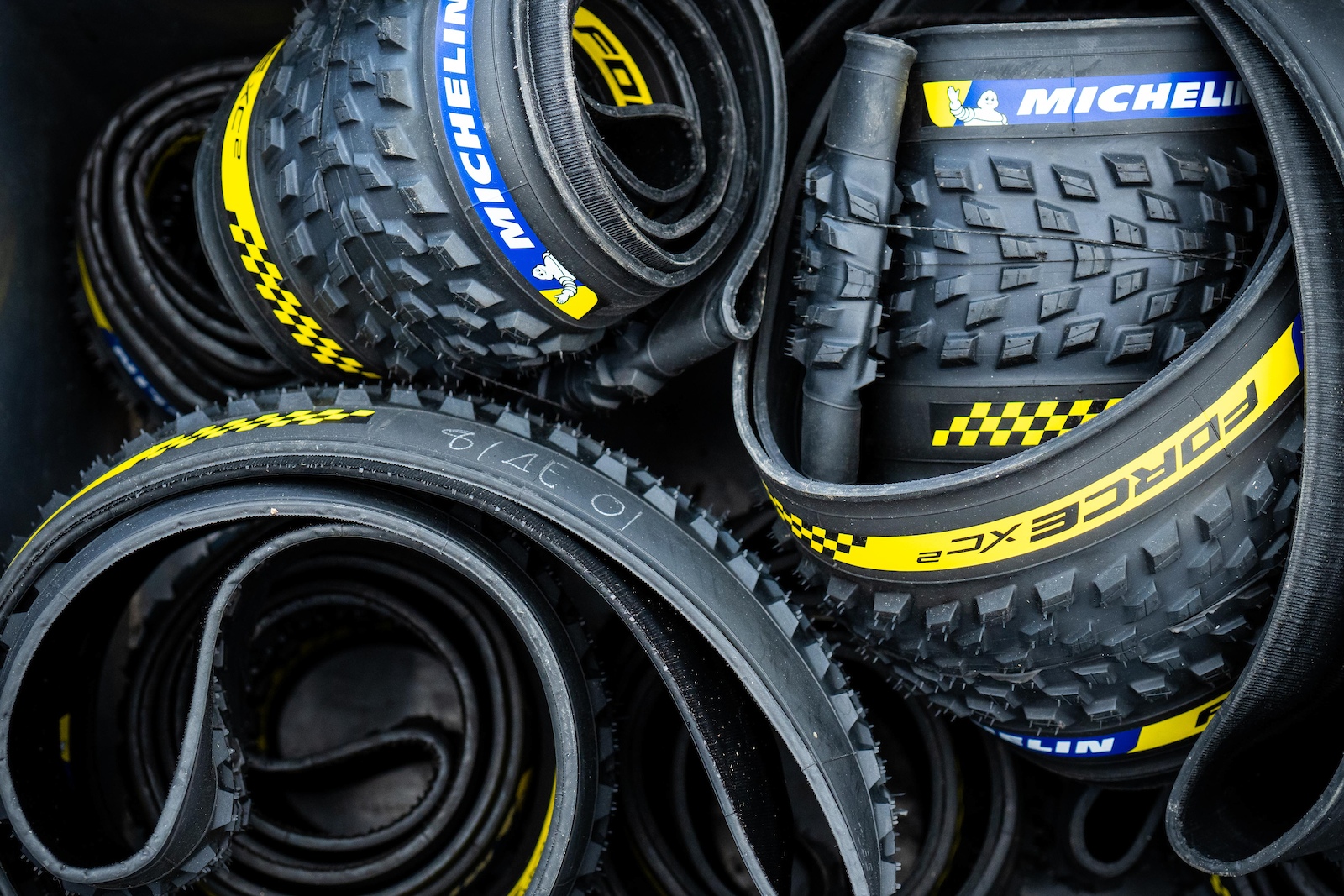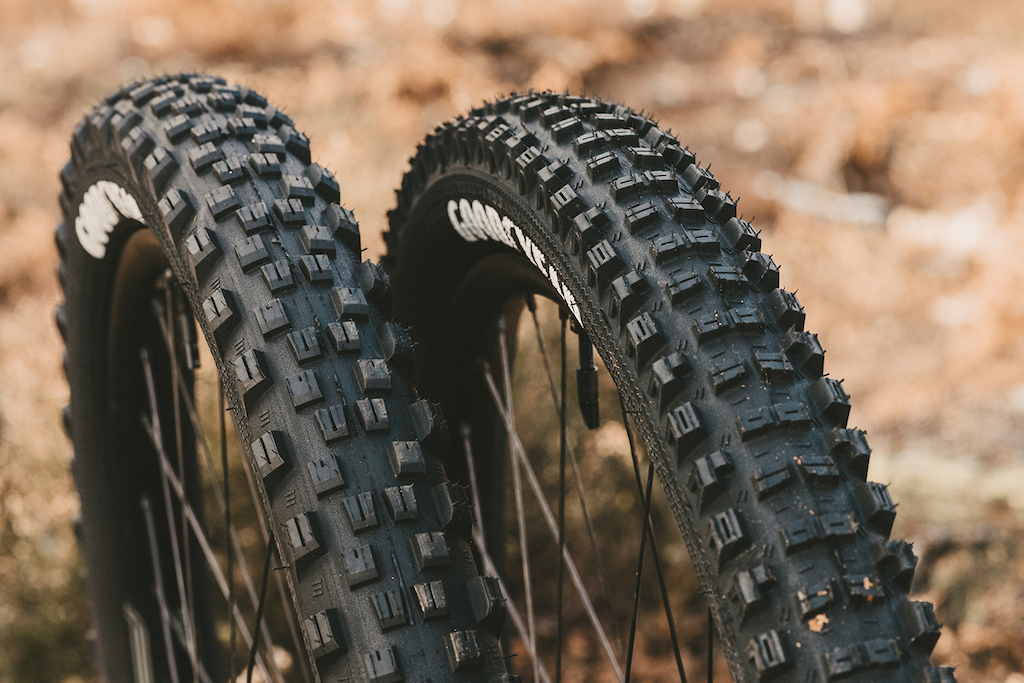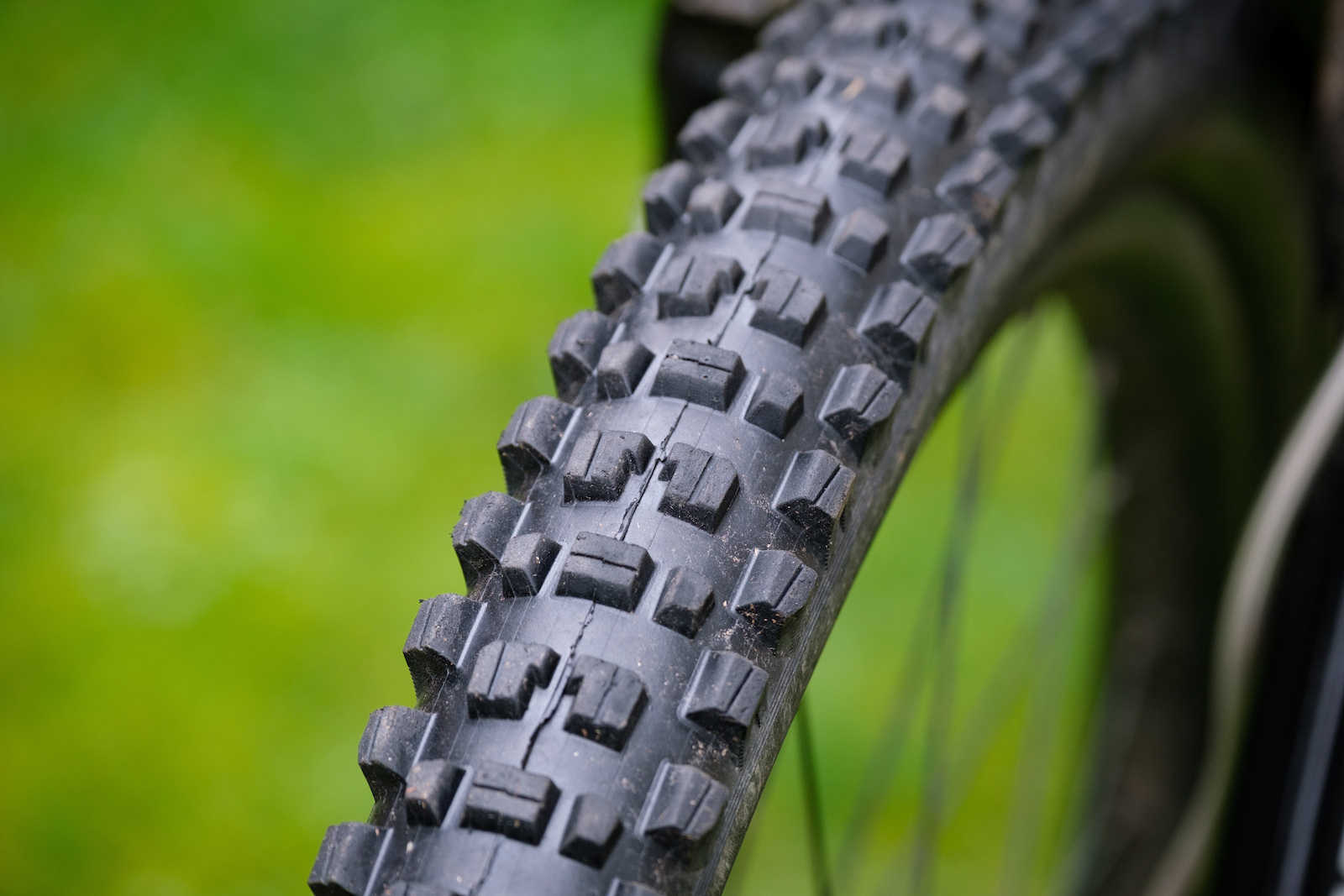
My favorite tire is the XR4 for 120-140mm bikes. It has a good balance of rolling speed, weight and grip. It’s the perfect Top Fuel tire. If it’s a little rougher I would opt for the SE4 in back for the added puncture protection. For 150mm+ and ebikes I go with the G5. There’s nothing like a Rail or Slash with a G5. Grip for days and you can smash into everything without worrying about flatting.

The major change for tubeless tech will come as more companies design products around the ISO-5775-2 standard. The standard has set design ranges for tire well shape, bead wall height and bead seat diameter among other things. This will lead to less compatibility issues between different brands of tires and rims. Maybe not a major change but I think there will be more high flow valves coming onto the market as those things are pretty handy.

I think inserts have a place. They offer performance benefits and added protection however due to the installation challenges I normally steer clear of them. If I need more protection or grip I just run an enduro or DH tire. Currently we don’t factor inserts into new tire development however maybe something to consider in the future.

I’ve heard about this also but never actually tried it. Time for some N=1 internet science. I inflated a new XR4 and took some tread width measurements assuming a delta in tread width would equate to a volume change in the tire. At 25 psi the average width was ~58.7mm. Then I inflated it to 50 psi and it was ~60.6mm. I let it sit over the weekend at 50 psi and when I came in on Monday it was ~62.2mm at 40 psi. I then dropped it back down to 25 psi and it was ~61.2mm. So I gained ~2.5mm in tread width at 25 psi over the weekend. Now I need to ride it back-to-back with a new tire to see if there is better ride feel. I’ll do that and report back.

Assuming the sticky tire has good wet traction I would take sticky tire over aggressive tread. I feel like the traction in good dirt between an aggressive tire and a less aggressive one isn’t nearly as big as the traction difference between a grippy and slippy tire in wet conditions.

I think some athletes use narrower rims due to the balance of tire feel, rim durability and traction they can achieve at their preferred riding pressures. Or they saw Aaron Gwin’s Leogang tireless run and won’t run anything other than a 25mm inner width EX 471.

Rolling resistance is still something of concern for a DH tire. Fort William motorway anybody? That’s one of the reasons most DH tires are 2-ply 60TPI high turn up constructions without any added sub tread puncture protection. Although this 2-ply 60TPI construction makes for a diesel tire, the bias plys of the carcass material can still flex and allow the tire to roll relatively well over rough terrain.

We are working to get a tire recycling program in our Trek stores however nothing concrete has taken shape yet. We are also looking at incorporating more alternative materials into our tires. We are working on compounds with high percentages of recycled/bio based materials as well as 100% recycled nylon fabrics that come from old fishing gear. We still have a lot of work to do to achieve our performance goals but the early lab data looks promising.

Right now there aren’t any plans beyond just drinking a few beers and talking to Travis Brown about it. Not only are there limitations on the manufacturing side but adapting frames to wheels larger than 29in would be especially challenging on smaller sizes. I also think riders suffered some burn out by all the wheel size and axle standard changes in the 2010s. Let’s make the 2020s the decade of no standard changes, just better products like headset cable routing…../s

One of our favorite tires is the Michelin DH22 (a.k.a. the “22”). The positive feedback was overwhelming when finalizing the design with our professional athletes. Our riders’ impressions were “tons of grip, nearly unbreakable, extra confidence, and shralp ready.” As a part of our top-performing racing line tire offering, the Michelin DH22 provides maximum grip and reliability to riders. The DH22 delivers high performance and creates reasons to believe in our Racing Line’s top-level DNA.

Each time we renew an MTB range, our mindset is to provide a superior experience with tubeless-ready tires. Our engineers are continuously working to improve tubeless-ready technology for all riders. For example, a rider can easily ride the DH22 or Wild Enduro Front Racing Line with minimal sealant when combined with a new rim, tape, and valve stem, thanks to our design focus on tubeless-ready technology. Today, the biggest challenge with tubeless technology is achieving the optimal balance between lightweight and airtight tires for cross-country, down-country, and trail applications.
In conclusion: no significant changes, but we are dedicated to continuously improving tubeless tire technology for riders.

Inserts are good for protecting rims, but they are disadvantageous when used with tires that do not rely on inserts to perform optimally. If your tire is robust enough, putting an insert inside the tire decreases the air volume in the tire, which causes a loss in absorption capability resulting in a less efficient tire. The tire insert effectively reduces your bike’s rear travel. Furthermore, inserts do not provide additional puncture and cut protection for the tread and can even degrade tire reliability if too large. This is important when riders try to optimize weight by combining a trail tire with an enduro or D.H. insert.
With our new tire development, we remain focused on a “no insert” strategy by achieving the tire performances riders look for with inserts. Riders will enjoy easier tire installation and can ride more confidently in rough terrain with lighter wheel sets.
P.S. – Did you know the MS Mondraker team was not riding inserts during the World Cup? Also, did you know Sam Hill won two Enduro World Series titles without using inserts on Michelin tires?

It is true! New tires grow after installation and inflation for 24 hours, but there’s no need to stay at max pressure for long periods. Once the tire has been installed and has stretched, adjust the pressure to your preferred riding pressure and go out for a ride! The tire will feel even better after a few laps on your local trails.

I would choose a sticky compound over an aggressive tread pattern. In most cases, a sticky compound will provide more confidence when riding harsh conditions like wet roots and off-camber slabs like what you will find on the North Shore. An aggressive tread pattern will slide without a sticky compound when riding these same trails.

Racers riding 25 to 28mm rims (versus the standard 30mm) are doing it for multiple purposes:
1. Narrower rims provide a rounder tire profile for more dynamism when changing the lean angle from side to side
2. Narrower rims can offer more flex which provides more grip
3. Narrower rims provide weight saving

Increased grip provides more confidence when descending, allowing riders to push their limits and test the laws of physics each run. In addition to grip, rolling resistance is essential to maintain momentum in rough sections and regain momentum after a mistake. After a full day of bike park laps, riders will appreciate a better rolling tire that preserves some energy for the post-ride party!
So yes, we care about rolling efficiency while focusing efforts on preserving a high level of grip for all future Michelin tire ranges.

Michelin is a big group, and we are 100% concerned with reducing our impact on the planet. The Group’s ambitions are to have tires consisting of 40% recycled or renewable bio-sourced materials by 2030 and 100% recycled or renewable bio-sourced materials by 2050. Michelin group also works with local institutions to push the recycling of all tires. For example, bicycle tires are now within the scope of tire recycling companies in France. Our challenge is to develop this kind of initiative for all countries worldwide. Also, we recently joined the Tire and Tube Recycling Task Force initiative with People For Bikes in the U.S.!

We have no plan to develop 36″ or bigger tires today.

I thought parents weren’t supposed to pick a favorite… If I had to pick one, I’d go with the Newton. For me personally it fits my style of riding perfectly. I’ll typically use the Enduro casing of both the MTF and MTR and have found it to be the ideal partner for anything from all day pedal missions to smashing out bike park laps.

One of the key items that has ‘plateaued’ tubeless technology, especially with MTB, are the established standards around the rim and tire bead interface along with the design inner rim and tire width standards being more in line with what people are actually riding. For Goodyear bicycle tires, our focus has been on user experience with tubeless.
We developed our Tubeless Complete system that uses our Dual Angle Bead design that allows for easier initial set-up and bead retention along with our additional non-porous casing layer which better seals the tire’s carcass. This means more sealant is left within the tire to seal it, should a rider experience a puncture.

While we remain neutral to the usage of inserts, we understand their popularity for riders looking for additional protection from impacts. Many of our test riders along with our athletes may use inserts based on the conditions their facing so we are able to capture the feedback as part of our overall development process.

I’ll apologize now for the long answer here. All bicycle tires are a bias construction which means that the casing fibers are run at an angle (45° give or take) which allows the casing to expand unlike what is found on a radial tire. Increased volume does affect ‘ride feel’ but doesn’t necessarily improve it, it’s just one part of a bigger picture.
Per ETRTO and ISO standards, a tire’s section width is taken after it has been mounted on its specific measuring rim at maximum pressure for a period of 24 hours at room temperature. The measuring rim is the one the tire was originally designed around. As an example, a 29×2.4” (60 thru 62 – 622) is designed around a 30mm inner rim meaning that tire will be that width in mm when mounted to that inner rim for 24 hours. There is always some variance based on the tire construction and rim profile. This is done for safety reasons revolving around tire clearance requirements between frame & fork structures.
An important thing to remember is that for every 1mm change in inner rim width, a tire will increase or decrease roughly .4mm. This means that a 29×2.4 tire could measure around 2.2” wide if mounted to a rim with a 25mm inner rim. We publish both the design inner and allowable inner rims for all our tires which can be found on their product pages at www.goodyearbike.com.

That’s a tough one.. For me personally I would run a sticky tire over an aggressive tread pattern. On my local trails in South Wales and for my riding style, a softer compound works best. Thankfully we can have it all though!

This is an interesting topic that I’ve discussed multiple times with a good friend who’s a mechanic for one of the top DH teams. From his rider’s perspective on their current setup, a narrower rim gives a much rounder tire profile and therefore provides more usable tread when leaning the bike. Although I somewhat appreciate that point, my argument is lack of stability: you’re taking a narrow base (rim) and putting something wide (tire) on top that takes huge impacts and sideloads with only a small area of connection (bead) between rim and tire. In my opinion, it’s better to increase the footprint to provide a more stable base.
It’s also worth noting that tire manufacturers optimize tires around specific internal rim widths, taking tire profile amongst other factors into consideration. As a newer brand to the market, we have the fortune of introducing our MTB tires after wider rims (30mm+) became more popular and subsequently design around modern rim standards. I can’t speak to any specific brands, but I would guess there are many 2.4 or 2.5” tires being used by high-level racers (even those produced recently) that are designed around a 25mm internal rim width. In this instance it makes perfect sense that a narrower (25mm) rim would ride better.

Absolutely, rolling resistance is still very important with a downhill focused tire. Whilst the bias is shifted towards gaining as much grip as possible, having a tire with as little rolling resistance as possible is still key. Even if riders aren’t chasing split times, having a tire that rolls well will have a huge impact on how a bike feels.

We understand and appreciate the need to reduce our environmental impact in a meaningful way. For starters, we have made the choice to utilize recovered (recycled) carbon black which is the second most widely used raw material in the rubber industry. Tire production is also heavily energy dependent and as a part of the vulcanization process, we minimize energy waste by recycling steam / water from the curing process which reduces both fuel usage and conserves water.

We are in constant communication with our OEM partners and are working on some ‘out of the box’ thinking projects at the moment. However, tires with a larger than 622 (29”) bead diameter is not one that we are currently working on.

This is a tough one, as I can think of so many tires like the Snap WCE, which kick-started our journey in the DH World Cup, or the Speed Booster Elite, which has one multiple World Championships in BMX and Pump Track, but I guess, I will have to go with our newest tire is the Attack FSX.
This tire is the culmination of our hard work throughout the last year and has produced the best results we ever had in the Downhill World Cup, which is in my opinion, the most competitive race with how close each race is (by a few milliseconds).

Soon, probably no big changes will occur as I think the reason why it plateaued is because everything is working now.

For us, we’ve always developed tires functional on their own. Our R&D does take it into consideration but is not a main driver when we develop our tires. To give an example, Intense Factory Racing uses our tires without any inserts in the DH World Cup.

In general, if you leave it at the max psi, it will stretch the casing a little bit but variations and effects differ depending on multiple variables such as TPI, how far does the Apex Inserts go on the side of the tires, etc.

This is a tricky one, as you said, to each on their own.
We usually make tires based on 4 things, tread design, compounding, casing, and development. All these things are equally important to make a great tire. But if I must choose, I’ll go with the sticky tires. It’s usually super dry here in Thailand during the summer and trails near our HQ is mostly Hard Terrain, so this gives us the best benefit in riding.
It doesn’t hurt also to mention that Vee is well know in making a super sticky compound that is renowned in the underground drag scene in Thailand and innovated the DH race scene with our project with ITS (Intense Tire Systems) back in the early 2000s.

Top athletes try to get even the slightest advantage in the pinnacle of their discipline. Assuming that narrower rims use narrower tires and wider rims use wider tires, generally speaking, the narrower setup will provide less rolling resistance and should be a tad lighter than the wider setup.
Wider setup would provide more comfort but if we’re talking about milliseconds, athletes typically have the luxury to forego this as their bodies are trained extensively to have great range of movement.

Yes, both of them are important as in a downhill track, there are 2 main parts, there’s the bike park / motorway parts where rolling resistance play a big role in getting the fastest time, while there are technical segments where tire grip gives the riders utmost confidence in going faster and doing quicker turns than if they have a less grippy tire.

Currently, we are developing ways to use excess rubber we have when producing green tires and re-using them in other production runs, reducing our waste. We are also trying to make better performing tires with 100% recycled rubber as another running project in our pipeline.

Funny you mention that as we are one of the few manufacturers that care and make 36” tires.
I think there’s some truth to that, but also, I think the performance jump from 29” tires to 36” tires aren’t as big and mainly benefits tall people. For people who are average in height, it might not be motivating for them to even want these as 29” is sufficient. Maybe the next step will be 32”, but 29” will probably be the top choice for riders for years to come.

I was riding the Grappler tires before I worked for e*thirteen — it’s the first tire I’ve ridden that has felt truly balanced. The combination of the sidewall construction, tread, and compound made my bike feel more predictable.

We think of tubeless as a system: we engineer wheels, tires, tape, and Plasma fluid. Our current system works well but there is so much room for improvement. There won’t be any game-changing improvements unless you work on it as an entire system. That’s obviously difficult because we want to preserve compatibility so riders have more choices.

Inserts! We love them in most circumstances. We look at them not only to protect the rim from strikes but as a way to tune the spring rate and damping characteristics of any tire. Running a mid-sized insert allows riders to drop a few psi while offering better damping and traction on roots and rocks. The tire also ramps up for better support when being pushed through turns and impacts.

This is definitely true in terms of full volume. Depending on the construction, a 2.4” tire casing can stretch 1-2 mm when left at 30 psi for 24 hours. You can accomplish the same thing much faster if you just go out and ride the tire though.

Put me down for an aggressive tread pattern, Dario! I’m lucky enough to call the loam capital of Squamish my home so having tread that bites into the mud and soft soil would do me a lot more good than a nice soft rubber floating around on top. But I’m sure I’d have a different answer if I didn’t live where I do.

That’s a good question. In our experience, we have found 30 mm to be the perfect strength-to-weight ratio for our aggressive enduro/downhill rims and 28 mm for the trail/downcountry folks out there.

Rolling resistance isn’t an afterthought when developing a downhill tire focused tire. For us, getting the tire to feel fast and efficient while offering traction and support is in all the small details hashed out in the testing process. Small adjustments can be made to the casing or compound to get the right combination of characteristics. In the end, it is about choosing the right compromise for the intended application.

The factories that produce our tires do have recycling and regrind processes in place. In terms of end of life for tires, we’re finishing up our company ESG policies this year which will include supporting some regional upcycling programs.

Let’s all take a deep breath and not create more standards to confuse and frustrate consumers. 29” and 27.5” work pretty great for performance mountain bikes.
Need more tire talk in your life? Check out part one of this interview series here.





